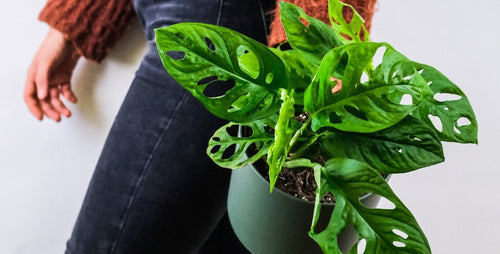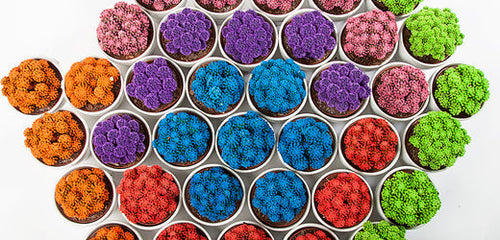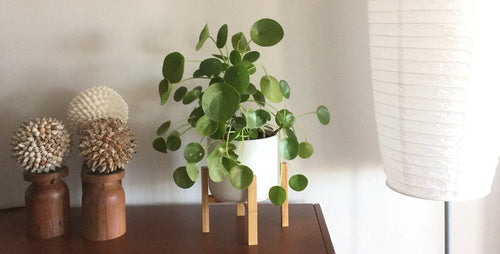By Justin Hancock
Houseplants have the magical quality of making any space more inviting, and this makes them ideal décor items for homes and offices. Happily, they’re more than just beautiful décor. Scientific research shows being around houseplants makes us feel better, too, by reducing stress. They can also make us perform better by boosting cognition, concentration, and memory. And, of course, they clean the air by removing potentially harmful VOCs that can accumulate inside. These VOCs – volatile organic compounds -- are silently added to our air by seemingly everyday objects, including cleaning products, paint, and carpet.
Learn more about the health benefits of houseplants
Not sure how to get started decorating your space with houseplants? Read on for my tips.
 Picking the Right Houseplant
Picking the Right Houseplant
If you’ve heard that houseplants are hard to care for, it might because the plant was in the wrong spot. Where you grow a plant is the single most important factor as to whether it will thrive. Select plants that prefer your home’s conditions and they’ll be a lot easier to grow successfully.
Light:
Start with light. You’ll see on plant most plant tags three categories: bright, medium, and low. Your space is low light if you can comfortably read a newspaper or magazine throughout the day without having to add more light. High-light spaces make houseplants cast a strong shadow most of the day.
Note: Your houseplants don’t need natural sunlight -- any illumination will do. That’s plants can grow well in corporate settings where there are only fluorescent lights around.
Water:
Watering is entirely up to you, which can be good news or bad news (depending on your watering style). Knowing how much to water houseplants is one of the most common questions I’m asked, and there’s an easy answer: Add moisture to most plants when the top inch or so of the potting mix dries to the touch. If you’re one who sometimes forgets to water, go for houseplants labeled as low water; most of these plants make it through periods of dryness well.
Temperature:
Happily, almost all houseplant varieties like the same temperatures as you do: 60 to 85F (15 to 29C).
Drafts:
In their natural habitats, plants aren’t exposed to regular blasts of hot or cold air. Keep your plants happier by avoiding spots where they’re hit by air from heating or cooling vents, as well as drafty doors or windows.
Decorating with Houseplants
Once you know which plants should thrive based on your home’s conditions (and your watering routine) comes the fun part: Bringing them into your décor.
 Group Your Favorites:
Group Your Favorites:
A single plant is lovely on its own, but most look their best in combination (just like in nature). Mix plant heights, colors, and textures for added interest. For example, go with a trio of low-growing columnea, upright Madagascar dragon tree, and lush croton.
Hang Ten with Plants:
Low on space? Grow up and hang plants from wall-mounted brackets or ceiling hooks. By hanging your houseplants, you don’t lose floor space. This can be especially helpful if you have children or pets you don’t want interacting with your plants. Some common picks for hanging baskets include pothos, English ivy, and ferns.
Hit the Shelves:
A trendy way to display houseplants is to show off a collection on a shelf. Like hanging plants in baskets, this gets them up and out of reach of curious children and pets. By putting your plants together like this, you create an artistic effect, making the plants shine.
Control Traffic Flow:
Large floor , especially the tall, narrow varieties (such as majesty palm and corn plant) can be used as an elegant room divider between your living room and dining room, for example.
Put the Focus on Plants:
Plants can make a brilliant focal point on tabletops or side tables. Their lush greenery adds a welcoming look that’s just as stylish as a sculpture. Ferns such as star, bird’s nest, and rabbit’s foot fern are especially effective as centerpiece plants because they’re so wonderfully textural.
Fill Empty Corners:
Use tall plants, including yucca cane and money tree, to boldly fill blank corners with rich texture. These types of houseplants are fabulous when used to flank furniture such as entertainment centers, especially if you prefer a formal, stately look.
 Plant Them Together:
Plant Them Together:
Put your creativity to use and plant several different houseplants together in the same pot! You can go with different varieties of the same size, or create interesting contrasts. For instance, cover the soil around the trunk of a Ficus Alii with a few low-growing purple waffle plant or artfully mix different varieties of no-fuss Colorful Aglaonema together and let them complement each other’s’ colorful variegated leaves.
Make a Statement with Pots
When decorating with houseplants, use the container to your advantage, as well as the plant growing inside. Because you commonly see houseplants sold in inexpensive black plastic pots, it’s easy to dress them up with a fresh container that suits your look. You can either repot your plant entirely or simply drop the plastic pot into a similarly sized option that’s more attractive. Put the right look together by using containers that complement or contrast your plants and the surrounding décor.
Get tips to repot your houseplants.

















